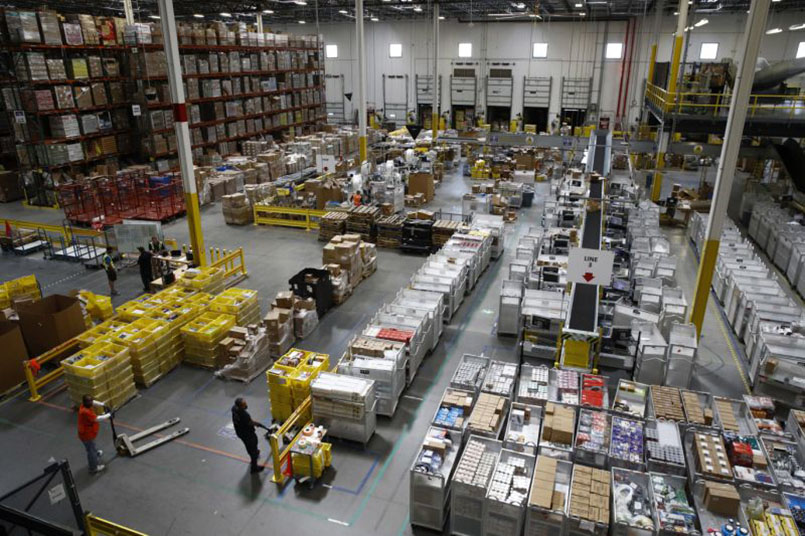
Resurgent demand in the long-stagnant industrial sector and a big seasonal boost in e-commerce are pushing more goods through shipping networks on the land, water and air, say operators who expect the strengthening U.S. economy to keep the growth going into 2018.
From seaports in Southern California to truck docks at central Ohio warehouses, shipping across the U.S. is picking up at a pace that freight companies say they haven’t seen in several years.
Imagine your Ad placed here
“This week has been one of our busiest this year,” Shane VanDerWaag, director of intermodal services at transportation and logistics provider The Dependable Companies in Southern California, said as his company handled goods this week. “I hit up other companies to help us out and they’ve been fully stacked and packed as well.”
The Commerce Department reported Wednesday that U.S. economic output grew at a 3.3%annual rate in the third quarter, faster than earlier estimated, and the reports from shipping sites suggest the muscular economic growth is continuing in the fourth quarter.
Freight volumes at the ports of Los Angeles and Long Beach usually begin to slow as Black Friday nears, but Mr. VanDerWaag said his drivers remained as busy as ever.
The nation’s top ports of entry, Los Angeles-Long Beach, and New York-New Jersey, in October, imported a combined 1,031,127 20-foot-equivalent units, a standard measure for container cargo in October. That amounted to a 2.5% jump from the same month last year. For the Port Authority of New York and New Jersey, October’s total cargo volume broke the all-time record for the month.
Demand is also surging on the roads. The Cass Truckload Linehaul Index, which measures per-mile pricing for truckload carriers, rose 5.5% year-over-year in October, reaching an all-time high. Cass also reported that October freight shipments rose 2.9% and companies spent 11.2% more to ship goods in October than they did a year ago, a sign that transport prices are rising as retailers and manufacturers compete for space in increasingly crowded transport networks.
Online freight marketplace DAT Solutions LLC said it saw the highest number of weekly loads in mid-November than it had ever measured for spot van freight, with demand up 20% year-over-year.
“We are feeling that effect,” said Mark Rourke, Chief Operating Officer with transportation and logistics firm Schneider National Inc. “It’s more [demand] than we’ve experienced the last couple of years for sure.”
Mr. Rourke attributed the later-season demand surge in part to e-commerce, which has extended the duration of the freight sector’s busy season in recent years.
These days, the peak season that traditionally tapered off after a single big surge comes in waves, analysts say. After initial shipments have gone out from distribution centres to brick-and-mortar stores, a second wave of cargo arrives to stock warehouses for online order fulfilment. And restocking continues through the end of November and early December as companies adjust to changing demand.
To better manage the new, longer peak season, retailers have been staffing up earlier and keeping workers around later in the year to handle the e-commerce bump followed by the frenzy of order shipping after Thanksgiving. Many warehouses remain busy into January, handling returns and holiday gift-card purchases.
As ships, trucks and trains continue working to position holiday cargo after the season’s official kickoff last week, warehouse staff are trying to keep pace. Surging e-commerce sales have required round-the-clock staffing at fulfilment centers where workers pick, pack and ship online orders.
Follow us on TWITTER for more Logistics News Follow us on FACEBOOK for more Logistics News
On Black Friday, online orders were coming in so quickly at a warehouse run by Radial, which handles e-commerce fulfilment for Aéropostale Inc. and other retailers, that managers asked workers to voluntarily staff shipping stations during the usual hour of downtime between shifts.
“We can get probably an extra 4,000 or 5,000 orders out the door just during that hour,” said Ilias Simpson, director of operations-fulfilment at two Radial facilities in Northern Kentucky.










